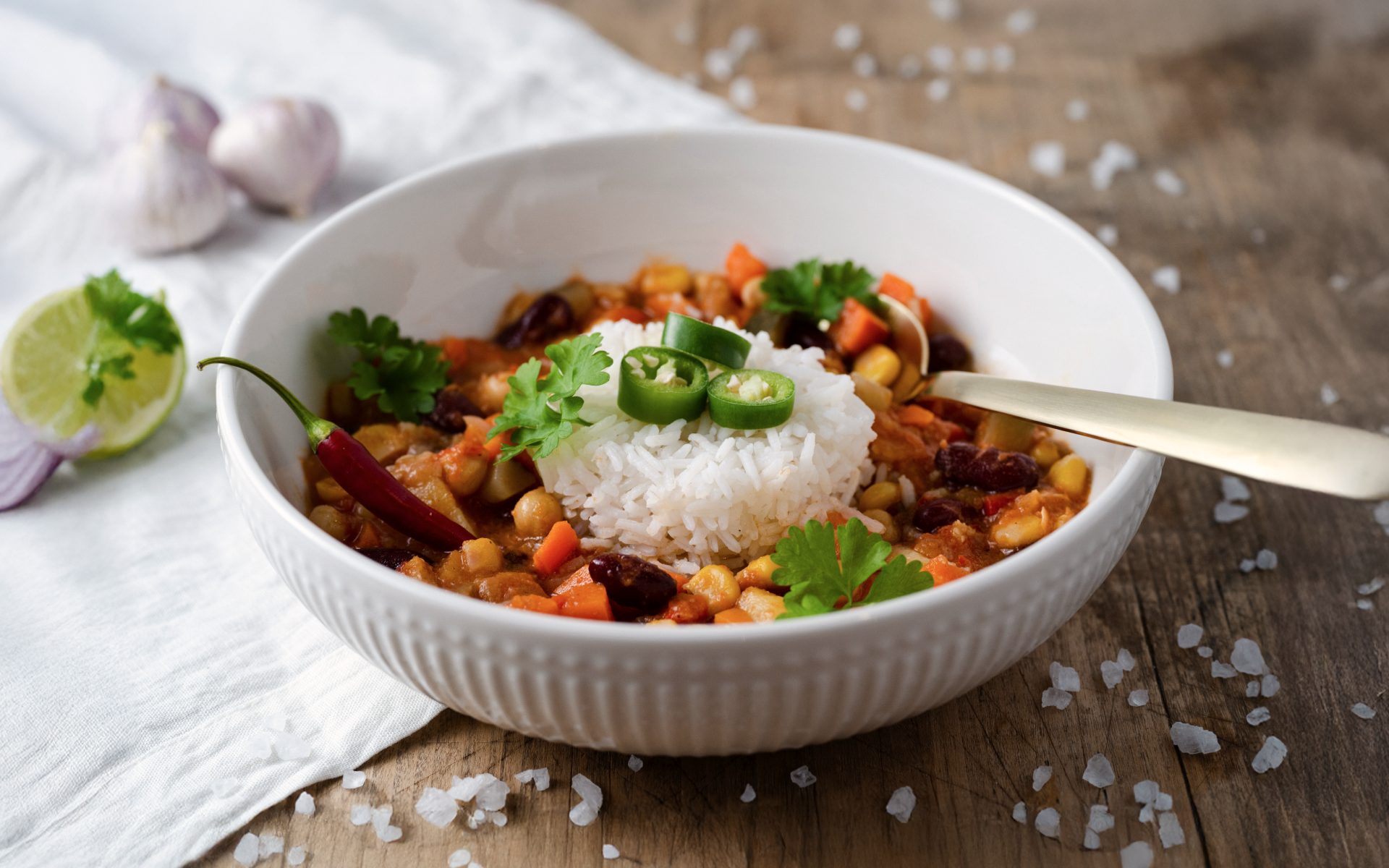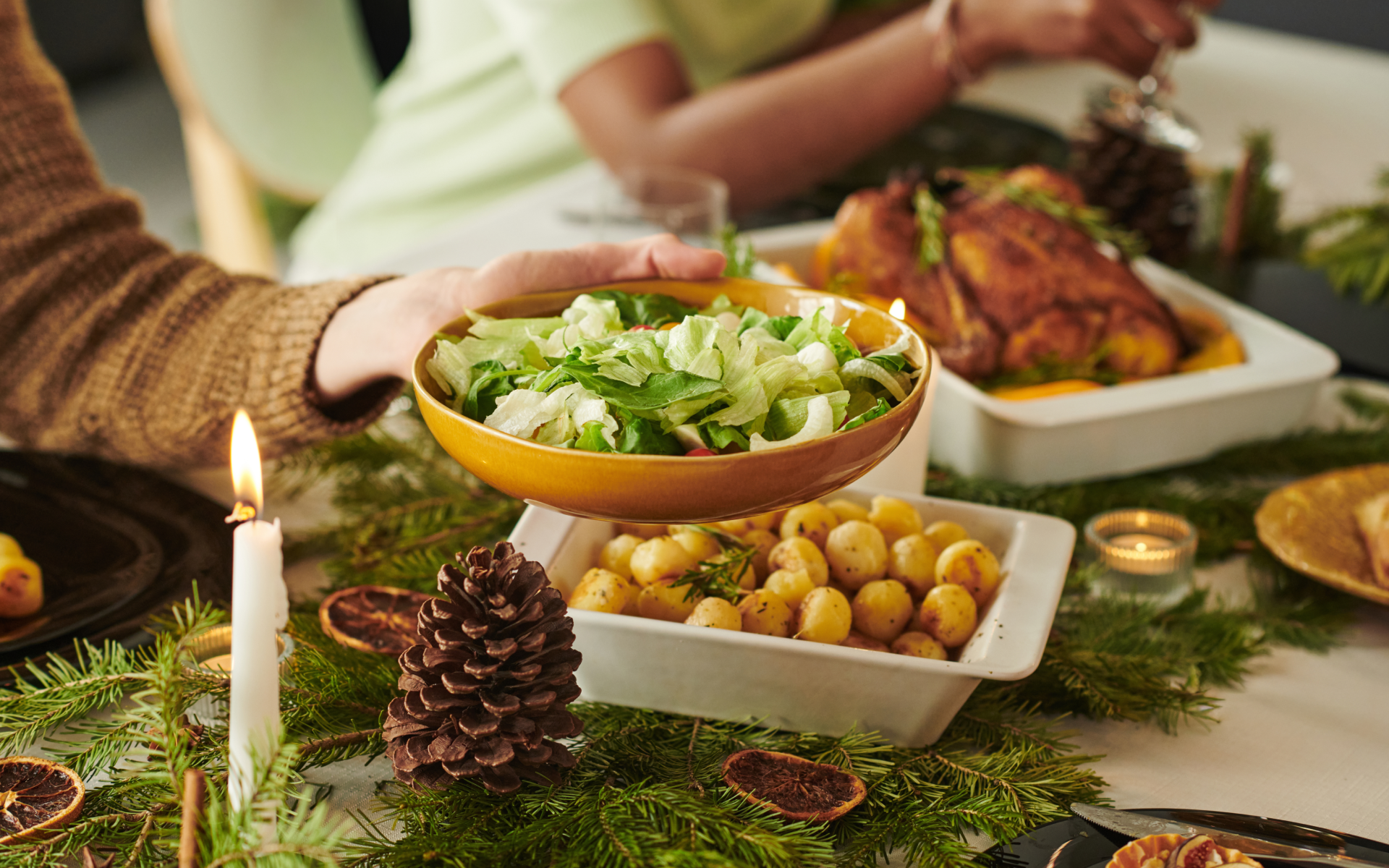Mango jelly is a delightful and refreshing dessert that is popular in many parts of the world. This sweet and tangy treat is made from mango juice, sugar, and gelatin, giving it a smooth texture and vibrant color.
There are different variations of mango jelly, depending on the country or region it is made in. In some places, it may be served as a standalone dessert, while in others it is used as a topping or filling for other desserts such as cakes and pastries.
In this guide, we will take a closer look at mango jelly and how you can make it at home. We will also explore some interesting facts about this tropical desert and its possible health benefits.
What Is Mango Jelly Made Of?
Mango jelly is made up of three main ingredients – mango juice, sugar, and gelatin. The amount of each ingredient used may vary, depending on personal preference and the desired consistency of the jelly. Let’s take a closer look at each of these components:
Mango Juice
The primary ingredient in mango jelly is, unsurprisingly, mango juice. This gives the dessert its distinct, rich flavor and bright orange hue. Fresh mango juice is often preferred for a more authentic taste, but store-bought juice works as well. For a healthier option, you can opt for unsweetened mango juice as one way to reduce the overall sugar content in the dessert.
Sugar
Sugar is used to sweeten the jelly, balancing out the tanginess of the mango juice. However, for those looking to make a Mango jelly keto version, non-nutritive sweeteners like stevia or erythritol can be great alternatives. These low-calorie substitutes ensure that the jelly remains sweet without adding unnecessary sugars.
Gelatin
Gelatin is what gives the mango jelly its unique, wobbly texture. For a vegetarian or vegan alternative, agar-agar powder can be used instead of gelatin. This plant-based substitute is equally effective and ensures the jelly is suitable for those with dietary restrictions.
Does Mango Set In Jelly?
Yes, mango sets well in jelly due to the gelling properties of gelatin or agar-agar. When mango juice is combined with sugar and a gelling agent like gelatin or agar-agar, the mixture thickens and solidifies as it cools, forming a firm yet delicate jelly. The natural pectin in mangoes also aids in the setting process, ensuring a stable consistency.
The sweetness of the mango complements the smooth texture of the jelly, making it a delightful treat. The vibrant color of the mango adds to its visual appeal, making it both delicious and enticing. Whether for a simple dessert or an elaborate layered jelly, mangoes are fantastic for their flavor and setting properties.
Reasons why BetterMe is a safe bet: a wide range of calorie-blasting workouts, finger-licking recipes, 24/7 support, challenges that’ll keep you on your best game, and that just scratches the surface! Start using our app and watch the magic happen .
Is Mango Jelly Good for Health?
Mango jelly can have several health benefits, especially when made with thoughtful ingredient choices. Let’s explore some of the key health benefits one by one:
Rich in Vitamins
Mango jelly, especially when made from fresh mango juice, is rich in vitamins, particularly vitamin A (in the form of beta carotene) and vitamin C. Vitamin A is essential for maintaining good vision, while vitamin C plays a crucial role in supporting the immune system and collagen formation (1).
Low-Calorie Treat
When prepared with non-nutritive sweeteners like stevia or erythritol, a Mango Jelly keto version can be a low-calorie treat suitable for those on a low-carb diet. This type of mango jelly recipe can satisfy sweet cravings without the added sugar, making it an excellent option for weight management.
Digestive Health
Using gelatin or agar-agar in the recipe adds more than just texture; these substances are believed to support digestive health. The proteins in gelatin may help support the lining of the intestines, while agar-agar, a plant-based alternative, may act as a mild laxative and aid in regular bowel movements by stimulating bowel muscle contraction(3). This makes Mango Jelly potentially beneficial for those with digestive concerns.
Hydration and Electrolytes
Mango jelly made from fresh mango juice provides essential electrolytes like potassium and magnesium. These electrolytes are vital for maintaining fluid balance in the body, which is crucial for muscle function and overall energy levels (4). Consuming this refreshing dessert can help keep you hydrated, especially during hot weather.
Suitable for Various Diets
Mango jelly can be customized to fit various dietary needs. Using plant-based options like agar-agar powder makes it vegan-friendly. Moreover, modifications like using alternative sweeteners can make Mango Jelly healthy and suitable for a wider audience, including those on specific diets.
Supports Weight Loss
If you’re looking to enjoy a sweet treat while watching your weight, boba for weight loss with mango jelly cubes can be a great option. These servings are small in portion but satisfying, helping to curb cravings without overindulgence.
We’ve discussed this further in our, Is Mango Good For Weight Loss? article.
Sample Mango Jelly Recipes
The right mango jelly recipe can make all the difference in taste and health benefits. Here are 10 simple yet delicious recipes to try at home:
1. Tropical Mango Bliss Jelly (5)
Experience a taste of the tropics with this delightful mango jelly recipe, which combines fresh mango flesh and the subtle sweetness of coconut water. This dessert is perfect for a refreshing summer treat.
Ingredients:
- 500 gm Fresh Mango Flesh
- 2 tsp Gelatin or 3/4 tsp Agar Agar
- 3 tbsp Coconut Water
- 3 tsp Organic Sugar
Steps to Prepare:
- Prepare Mango Puree: Peel and chop the fresh mangoes. Place the mango chunks into a blender and blend until you get a smooth puree.
- Mix Gelatin or Agar Agar: Dissolve the gelatin or agar agar in a little bit of warm water. Stir until completely dissolved.
- Heat Coconut Water: In a saucepan, heat the coconut water over low flame and add organic sugar. Stir until the sugar is fully dissolved.
- Combine Ingredients: Add the dissolved gelatin or agar agar to the warm coconut water. Mix well to ensure even distribution.
- Blend Mixtures: Pour the mango puree into the saucepan and stir until everything is well combined.
- Set in Molds: Pour the mixture into jelly molds or a shallow dish. Allow it to cool at room temperature for a few minutes.
- Refrigerate: Place the molds in the refrigerator and let them set for at least 4-5 hours, or until the jelly is firm.
NUTRITION
Recipe makes 4 servings. Calories: 138 kcal | Carbohydrates: 33g | Protein: 2g | Fat: 2g | Saturated Fat: 1g | Sodium: 26mg | Potassium: 325mg | Fiber: 3g | Sugar: 30g | Vitamin A: 1912IU | Vitamin C: 65mg | Calcium: 22mg | Iron: 1mg
Read more: Juice It Up! A Guide to Reaping the Health Benefits of Mango Juice
2. Mango Delight Recipe (6)
Savour the rich flavour of ripe mangoes with this simple yet delicious Mango Delight. This recipe combines the sweetness of mango with the smooth texture of corn flour, creating a delightful dessert perfect for any occasion.
Ingredients:
- 2 cups Mango Puree
- 1 cup Sugar
- 1 cup Corn Flour
- 3 cups Water
- 4 tbsp Ghee
- Desiccated Coconut, for garnishing
Steps to Prepare:
- Prepare Mango Puree: Peel and chop fresh mangoes. Blend the mango chunks until smooth to form mango puree.
- Mix Corn Flour: In a bowl, mix the corn flour with a small amount of water to form a smooth paste. Ensure there are no lumps.
- Combine Ingredients: In a large saucepan, combine the mango puree, sugar, and the remaining water. Stir well to mix.
- Cook the Mixture: Place the saucepan over medium heat and bring the mixture to a gentle boil, stirring continuously.
- Add Corn Flour Paste: Slowly add the corn flour paste to the boiling mixture, stirring constantly to avoid lump formation.
- Incorporate Ghee: Add the ghee to the mixture and continue to cook until the mixture thickens and leaves the sides of the pan.
- Set in Molds: Pour the thickened mixture into a greased dish or jelly molds. Allow it to cool at room temperature for a few minutes.
- Refrigerate: Place the dish or molds in the refrigerator and let the dessert set for at least 2-3 hours.
- Garnish and Serve: Once set, garnish with desiccated coconut before serving.
3. Tropical Delight: Coconut Thai Mango Jelly (7)
Indulge in a fusion of tropical flavors with this Coconut Thai Mango Jelly recipe. This dessert boasts the rich, velvety base of coconut milk combined with the fresh, juicy essence of ripe mangoes, providing a delightful, refreshing treat perfect for any occasion.
Ingredients:
- 2 ripe mangoes, which should be fragrant, juicy, and slightly soft to the touch
- 2 cups of coconut milk, giving a rich, velvety base
- 1/2 cup of water, to balance the consistency and texture
- 1/2 cup of sugar, adjustable according to taste
- 1/4 cup of agar-agar powder, a vegetarian gelatin substitute derived from seaweed, to provide the jelly structure
- A pinch of salt, to enhance the overall flavor profile and balance sweetness
- Fresh mint leaves for garnish (optional), to provide a refreshing touch
Steps to Prepare:
- Prepare Mango Puree: Peel and chop the ripe mangoes. Blend them until smooth to form a puree.
- Mix Agar-Agar: Dissolve the agar-agar powder in 1/2 cup of water in a small bowl. Ensure the mixture is lump-free.
- Combine Coconut Milk and Sugar: In a saucepan, combine the coconut milk, sugar, and a pinch of salt. Heat over medium flame while stirring to dissolve the sugar completely.
- Add Agar-Agar Mixture: Once the coconut milk mixture is warm, add the agar-agar solution. Stir continuously to ensure even distribution and prevent clumping.
- Incorporate Mango Puree: Gradually add the mango puree to the coconut milk mixture, stirring well to blend all ingredients thoroughly.
- Heat the Mixture: Continue to heat the mixture gently, ensuring it does not boil, until the agar-agar is fully dissolved and the mixture is smooth.
- Set in Molds: Pour the blended mixture into jelly molds or a shallow dish. Let it cool slightly at room temperature.
- Refrigerate: Place the molds in the refrigerator and let them set for at least 4-5 hours, or until firm.
- Garnish and Serve: Once set, garnish with fresh mint leaves if desired and serve chilled for a refreshing tropical delight.
BetterMe app will provide you with a host of fat-frying fitness routines that’ll scare the extra pounds away and turn your body into a masterpiece! Get your life moving in the right direction with BetterMe!
4. Layered Mango Jelly (8)
Delight in the visually striking and tastefully layered Mango Jelly that combines the rich flavours of mango, coconut, and cream. This dessert offers a multi-textured experience that is sure to impress.
Ingredients:
- 150 grams mango puree
- 150 milliliters coconut milk
- 100 milliliters milk
- 100 milliliters double cream
- 50 grams granulated sugar
- 5 grams powdered gelatin
- 1/2 mango (cubed)
- Mango puree, mint, and blueberries to serve
Steps to Prepare:
- Prepare Gelatin: Dissolve the powdered gelatin in a little warm water. Stir until completely dissolved and set aside.
- Create Mango Layer: Heat 150 grams of mango puree in a saucepan over low flame. Add 25 grams of granulated sugar and half of the dissolved gelatin. Stir continuously until the sugar and gelatin are fully incorporated. Remove from heat.
- Set Mango Layer: Pour the mango mixture into the bottom of your mold or serving glasses. Allow it to cool slightly and then place it in the refrigerator to set for about 1 hour.
- Prepare Coconut Layer: In a clean saucepan, combine 150 milliliters of coconut milk, with 75 milliliters of milk, 25 grams of granulated sugar, and the remaining gelatin. Heat over low flame, stirring until all ingredients are well blended and dissolved.
- Pour Coconut Layer: Once the mango layer is set, gently pour the coconut mixture over it. Return to the refrigerator to set for another hour.
- Prepare Cream Layer: Mix the remaining 25 milliliters of milk with 100 milliliters of double cream in a saucepan. Heat gently, adding 25 grams of sugar, and stir until dissolved. Allow to cool to room temperature.
- Pour Cream Layer: Once the coconut layer is set, pour the cooled cream mixture on top. Let it sit in the refrigerator for an additional hour.
- Add Mango Cubes: Once fully set, top your layered jelly with cubed mango for added texture and freshness.
- Garnish and Serve: Finally, garnish with a dollop of mango puree, fresh mint leaves, and a handful of blueberries. Serve chilled for best results.
Read more: Is Mango Good for Weight Loss? Here’s What You Need To Know
FAQs
Are Fruit Jellies Healthy?
Yes, fruit jellies can be healthy! They are often made from real fruit, which means they can provide vitamins, minerals, and sometimes fiber if the whole fruit is used (9). However, it’s important to check the ingredients to ensure there aren’t too many added sugars.
What Is Jelly Made Of?
Jelly is typically made from fruit juice, sweeteners like sugar or honey, and a gelling agent such as gelatin or agar agar. Some recipes may also include extra flavors or natural colorings to enhance the look and taste.
Is It OK To Eat Jelly Every Day?
Moderation is key. Eating jelly every day is fine as long as you’re mindful of the sugar content and ensure it’s part of a balanced diet. Opting for jellies with real fruit can make it a healthier choice.
What Fruit Is Best In Jelly?
The best fruit for jelly depends on your taste preference. Mangoes, berries, apples, and grapes are popular choices due to their natural sweetness and vibrant flavors. Experimenting with different fruits can lead to some delightful combinations.
Is Jelly Better Than Honey?
It depends on what you’re looking for. Jelly offers a variety of fruit flavors and can be a fun and delicious way to consume fruit, but can contain a lot of added sugar. Honey, on the other hand, is a natural sweetener rich in antioxidants and has been used for its medicinal properties, but is also an added sugar. Both have their own unique benefits and can be included in moderation, so it comes down to personal preference and dietary needs.
The Bottom Line
Experience the pleasure of crafting delightful and refreshing treats with these 4 easy mango jelly recipes. Ranging from classic to exotic fusions, these recipes showcase the versatility and deliciousness of mangoes through a variety of flavors and textures.
Whether for a special occasion or everyday indulgence, each recipe delivers a burst of tropical flavor and a touch of homemade magic. Gather your ingredients, follow the simple steps, and savor the sweet satisfaction of crafting your own mango jelly masterpieces!
DISCLAIMER:
This article is intended for general informational purposes only and does not serve to address individual circumstances. It is not a substitute for professional advice or help and should not be relied on for making any kind of decision-making. Any action taken as a direct or indirect result of the information in this article is entirely at your own risk and is your sole responsibility.
BetterMe, its content staff, and its medical advisors accept no responsibility for inaccuracies, errors, misstatements, inconsistencies, or omissions and specifically disclaim any liability, loss or risk, personal, professional or otherwise, which may be incurred as a consequence, directly or indirectly, of the use and/or application of any content.
You should always seek the advice of your physician or other qualified health provider with any questions you may have regarding a medical condition or your specific situation. Never disregard professional medical advice or delay seeking it because of BetterMe content. If you suspect or think you may have a medical emergency, call your doctor.
SOURCES:
- Health Benefits of Mango By‐products (2019,researchgate.net)
- Gelatin tannate reduces the proinflammatory effects of lipopolysaccharide in human intestinal epithelial cells (2012,nih.gov)
- The Surprising Health Benefits of Agar (2023,pacificharvest.co)
- Fluid and Electrolyte Balance (2024,medlineplus.gov)
- SIMPLE AND HEALTHY MANGO JELLY (2018,scruffandsteph.com)
- Mango Delight Recipe (2022,hebbarskitchen.com)
- TROPICAL DELIGHT: COCONUT THAI MANGO JELLY RECIPE (2024,conceptyourkitchen.com)
- Layered Mango Jelly (2024,tastemade.com)
- Multifaceted Health Benefits of Mangifera indica L. (Mango) (2017,nih.gov)
- Why is it important to eat fruit? (2024,usda.gov)










